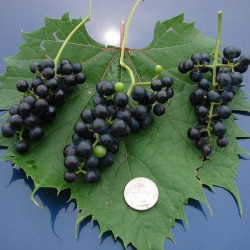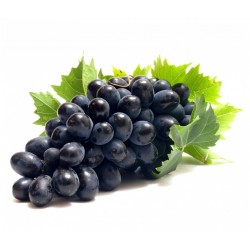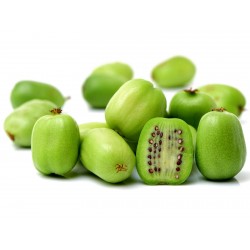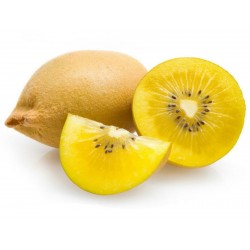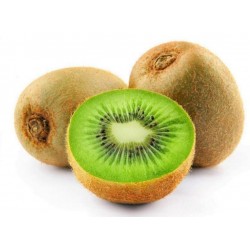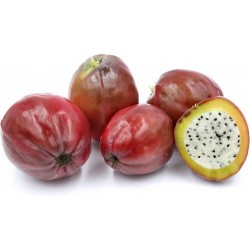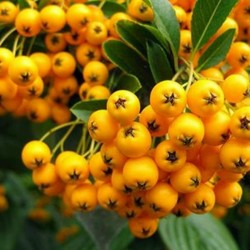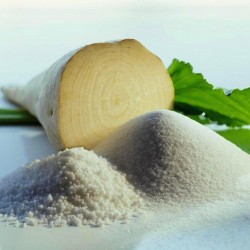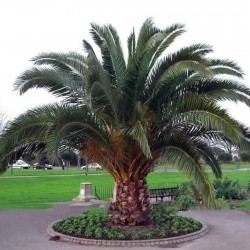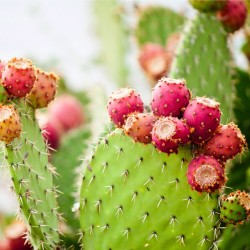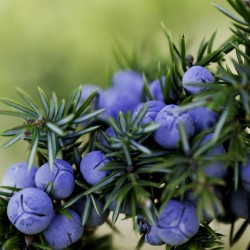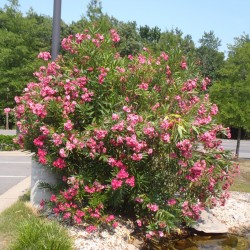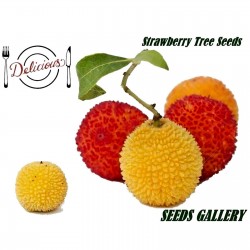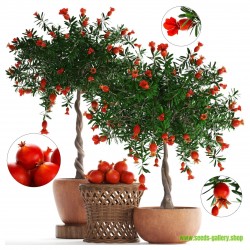
Planta rezistenta la frig si inghet

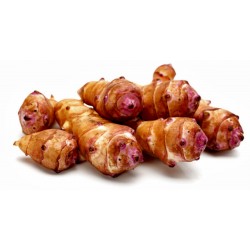
Jerusalem Artichoke Tubers...
Pret
7,95 €
(SKU: P 421)
Seeds Gallery EU,
5/
5
<!DOCTYPE html>
<html>
<head>
<meta http-equiv="Content-Type" content="text/html; charset=UTF-8" />
</head>
<body>
<h2><strong>Jerusalem Artichoke Tubers (Helianthus tuberosus)</strong></h2>
<h2><span style="color: #ff0000;"><strong>Price for Package of 5 Tubers.</strong></span></h2>
<p><i>Helianthus tuberosus</i> is a herbaceous perennial plant growing to 1.5–3 m (4 ft 11 in–9 ft 10 in) tall with opposite leaves on the upper part of the stem but alternate below.<sup id="cite_ref-4" class="reference">[4]</sup> The leaves have a rough, hairy texture. Larger leaves on the lower stem are broad ovoid-acute and can be up to 30 cm (12 in) long. Leaves higher on the stem are smaller and narrower.</p>
<p>The flowers are yellow and produced in capitate flowerheads, which are 5–10 cm (2.0–3.9 in) in diameter, with 10–20 ray florets and 60 or more small disc florets.<sup id="cite_ref-lilly_5-1" class="reference">[5]</sup></p>
<p>The tubers are elongated and uneven, typically 7.5–10 cm (3.0–3.9 in) long and 3–5 cm (1.2–2.0 in) thick, and vaguely resembling ginger root in appearance, with a crisp texture when raw. They vary in colour from pale brown to white, red, or purple.<sup id="cite_ref-purdue_3-1" class="reference">[3]</sup><sup id="cite_ref-rhs_6-0" class="reference">[6]</sup></p>
<h2><span class="mw-headline" id="Food_use">Food use</span></h2>
<p>Before the arrival of Europeans, Native Americans cultivated <i>H. tuberosus</i> as a food source. The tubers persist for years after being planted, so that the species expanded its range from central North America to the eastern and western regions.<sup class="noprint Inline-Template Template-Fact">[<i><span title="This claim needs references to reliable sources. (September 2017)">citation needed</span></i>]</sup> Early European colonists learned of this, and sent tubers back to Europe, where it became a popular crop and naturalized there. It later gradually fell into obscurity in North America, but attempts to market it commercially have been successful in the late 1900s and early 2000s.<sup id="cite_ref-lilly_5-2" class="reference">[5]</sup><sup id="cite_ref-LevetinEstelle_7-0" class="reference">[7]</sup></p>
<p>The sunchoke contains about 2% protein, no oil, and little starch. It is rich in the carbohydrate inulin (76%), which is a polymer of the monosaccharide fructose. Tubers stored for any length of time convert their inulin into its component fructose. Jerusalem artichokes have an underlying sweet taste because of the fructose, which is about one and a half times as sweet as sucrose.<sup id="cite_ref-LevetinEstelle_7-1" class="reference">[7]</sup></p>
<p>It has also been reported as a folk remedy for diabetes.<sup id="cite_ref-LevetinEstelle_7-2" class="reference">[7]</sup> Temperature variances have been shown to affect the amount of inulin the Jerusalem artichoke can produce. When not in tropical regions, it makes less inulin than when it is in a warmer region.<sup id="cite_ref-8" class="reference">[8]</sup></p>
<h2><span class="mw-headline" id="Etymology">Etymology</span></h2>
<div class="thumb tleft">
<div class="thumbinner"><img alt="" src="https://upload.wikimedia.org/wikipedia/commons/thumb/c/c2/Sunroot_flowers.jpg/220px-Sunroot_flowers.jpg" class="thumbimage" width="220" height="165" />
<div class="thumbcaption">
<div class="magnify"></div>
Jerusalem artichoke flowers</div>
</div>
</div>
<p>Despite one of its names, the Jerusalem artichoke has no relationship to Jerusalem, and it is not a type of artichoke, though the two are distantly related as members of the daisy family. The origin of the "Jerusalem" part of the name is uncertain. Italian settlers in the United States called the plant <i>girasole</i>, the Italian word for sunflower, because of its familial relationship to the garden sunflower (both plants are members of the genus <i>Helianthus</i>). Over time, the name <i>girasole</i> (pronounced closer to <span title="Representation in the International Phonetic Alphabet (IPA)" class="IPA">[d͡ʒiraˈzu:l]</span> in southern Italian dialects) may have been changed to Jerusalem.<sup id="cite_ref-Smith_1807_9-0" class="reference">[9]</sup> In other words, English speakers would have corrupted "girasole artichoke" (meaning, "sunflower artichoke") to Jerusalem artichoke. Another explanation for the name is that the Puritans, when they came to the New World, named the plant with regard to the "New Jerusalem" they believed they were creating in the wilderness.<sup id="cite_ref-LevetinEstelle_7-3" class="reference">[7]</sup> Also, various other names have been applied to the plant, such as the French or Canada potato, <i>topinambour</i>, and lambchoke. Sunchoke, a name by which it is still known today, was invented in the 1960s by Frieda Caplan, a produce wholesaler who was trying to revive the plant's appeal.<sup id="cite_ref-LevetinEstelle_7-4" class="reference">[7]</sup></p>
<p>The artichoke part of the Jerusalem artichoke's name comes from the taste of its edible tuber. Samuel de Champlain, the French explorer, sent the first samples of the plant to France, noting its taste was similar to that of an artichoke.<sup id="cite_ref-10" class="reference">[10]</sup> <sup id="cite_ref-11" class="reference">[11]</sup></p>
<p>The name <i>topinambur</i>, in one account, dates from 1615, when a member of the Brazilian coastal tribe called the Tupinambá visited the Vatican at the same time that a sample of the tuber from Canada was on display there, presented as a critical food source that helped French Canadian settlers survive the winter. The New World connection resulted in the name <i>topinambur</i> being applied to the tuber, the word now used in French, German, Italian, Romanian, Russian, and Spanish.<sup id="cite_ref-12" class="reference">[12]</sup> <sup id="cite_ref-13" class="reference">[13]</sup></p>
<h2><span class="mw-headline" id="History">History</span></h2>
<p>Jerusalem artichokes were first cultivated by the Native Americans long before the arrival of the Europeans; this extensive cultivation obscures the exact native range of the species.<sup id="cite_ref-grin_2-1" class="reference">[2]</sup> The French explorer Samuel de Champlain discovered that the Native people of Nauset Harbor in Massachusetts had cultivated roots that tasted like artichoke. The following year, Champlain returned to the same area to discover that the roots had a flavour similar to chard<sup id="cite_ref-NathalieCooke_14-0" class="reference">[14]</sup> and was responsible for bringing the plant back to France. Some time later, Petrus Hondius, a Dutch botanist planted a shrivelled Jerusalem artichoke tuber in his garden at Terneuzen and was surprised to see the plant proliferate.<sup id="cite_ref-NathalieCooke_14-1" class="reference">[14]</sup> Jerusalem artichokes are so well suited for the European climate and soil that the plant multiplies quickly. By the mid-1600s, the Jerusalem artichoke had become a very common vegetable for human consumption in Europe and the Americas and was also used for livestock feed in Europe and colonial America.<sup id="cite_ref-LevetinEstelle_7-5" class="reference">[7]</sup> The French in particular were especially fond of the vegetable, which reached its peak popularity at the turn of the 19th century.<sup id="cite_ref-LevetinEstelle_7-6" class="reference">[7]</sup> The Jerusalem artichoke was titled 'best soup vegetable' in the 2002 Nice Festival for the Heritage of the French Cuisine.</p>
<p>The French explorer and Acadia’s first historian, Marc Lescarbot, described Jerusalem artichokes as being “as big as turnips or truffles”, suitable for eating and taste "like chards, but more pleasant.” In 1629, English herbalist and botanist, John Parkinson, wrote that the widely grown Jerusalem artichoke had become very common and cheap in London, so much so “that even the most vulgar begin to despise them.” In contrast, when Jerusalem artichokes first arrived in England, the tubers were "dainties for the Queen".<sup id="cite_ref-NathalieCooke_14-2" class="reference">[14]</sup></p>
<p>They have also been called the "Canadian truffle". In France, they are associated, along with rutabagas, with the deprivations of the years of Nazi occupation during World War II, where the rationing and scarcity of traditional foods made them a regular part of the French diet until at the end of the war, they returned to their customary role as animal feed.<sup id="cite_ref-15" class="reference">[15]</sup></p>
<h2><span class="mw-headline" id="Cultivation_and_use">Cultivation and use</span></h2>
<div class="thumb tleft">
<div class="thumbinner"><img alt="" src="https://upload.wikimedia.org/wikipedia/commons/thumb/4/45/Sunroot_growing.jpg/220px-Sunroot_growing.jpg" class="thumbimage" width="220" height="244" />
<div class="thumbcaption">
<div class="magnify"></div>
Young plants in a garden</div>
</div>
</div>
<div class="thumb tright">
<div class="thumbinner"><img alt="" src="https://upload.wikimedia.org/wikipedia/commons/thumb/e/e5/Topinambur_H2ase1.jpg/220px-Topinambur_H2ase1.jpg" class="thumbimage" width="220" height="165" />
<div class="thumbcaption">
<div class="magnify"></div>
Sunroot tubers</div>
</div>
</div>
<p>Unlike most tubers, but in common with many other members of the Asteraceae (including the artichoke), the tubers store their carbohydrate as inulin (not to be confused with insulin) rather than as starch. So, Jerusalem artichoke tubers are an important source of inulin used as a dietary fiber in food manufacturing.<sup id="cite_ref-16" class="reference">[16]</sup></p>
<p>Crop yields are high, typically 16–20 tonnes/ha for tubers, and 18–28 tonnes/ha green weight for foliage. Jerusalem artichoke also has potential for production of ethanol fuel, using inulin-adapted strains of yeast for fermentation.<sup id="cite_ref-purdue_3-2" class="reference">[3]</sup></p>
<p>Jerusalem artichokes are easy to cultivate, which tempts gardeners to simply leave them completely alone to grow. The quality of the edible tubers degrades, however, unless the plants are dug up and replanted in fertile soil. Because even a small piece of tuber will grow if left in the ground, the plant can ruin gardens by smothering or overshadowing nearby plants and can take over huge areas. Farmers growing Jerusalem artichokes who then rotate the crop may have to treat the field with a weedkiller (such as glyphosate) to stop their spread. Each root can make an additional 75 to 200 tubers during a year.</p>
<p>The tubers are sometimes used as a substitute for potatoes:<sup id="cite_ref-17" class="reference">[17]</sup> they have a similar consistency, and in their raw form have a similar texture, but a sweeter, nuttier flavor; raw and sliced thinly, they are fit for a salad. Their inulin form of carbohydrates give the tubers a tendency to become soft and mushy if boiled, but they retain their texture better when steamed. The inulin cannot be broken down by the human digestive system<sup id="cite_ref-18" class="reference">[18]</sup> but it is metabolized by bacteria in the colon. This can cause flatulence and, in some cases, gastric pain. <i>Gerard's Herbal</i>, printed in 1621, quotes the English botanist John Goodyer on Jerusalem artichokes:<sup id="cite_ref-19" class="reference">[19]</sup></p>
<blockquote class="templatequote">
<p>which way soever they be dressed and eaten, they stir and cause a filthy loathsome stinking wind within the body, thereby causing the belly to be pained and tormented, and are a meat more fit for swine than men.</p>
</blockquote>
<p>Jerusalem artichokes have 650 mg potassium per 1 cup (150g) serving. They are also high in iron, and contain 10-12% of the US RDA of fiber, niacin, thiamine, phosphorus, and copper.<sup id="cite_ref-20" class="reference">[20]</sup></p>
<p>Jerusalem artichokes can be used as animal feed, but they must be washed before being fed to most animals. Pigs can forage, however, and safely eat them directly from the ground. The stalks and leaves can be harvested and used for silage, though cutting the tops greatly reduces the harvest of the roots.</p>
<table class="infobox nowrap"><caption>Jerusalem-artichokes, raw</caption>
<tbody>
<tr>
<th colspan="2">Nutritional value per 100 g (3.5 oz)</th>
</tr>
<tr>
<th scope="row">Energy</th>
<td>304 kJ (73 kcal)</td>
</tr>
<tr>
<td colspan="2"></td>
</tr>
<tr>
<th scope="row">
<div><b>Carbohydrates</b></div>
</th>
<td>
<div>17.44 g</div>
</td>
</tr>
<tr>
<th scope="row">Sugars</th>
<td>9.6 g</td>
</tr>
<tr>
<th scope="row">Dietary fiber</th>
<td>1.6 g</td>
</tr>
<tr>
<td colspan="2"></td>
</tr>
<tr>
<th scope="row">
<div><b>Fat</b></div>
</th>
<td>
<div>0.01 g</div>
</td>
</tr>
<tr>
<td colspan="2"></td>
</tr>
<tr>
<th scope="row">
<div><b>Protein</b></div>
</th>
<td>
<div>2 g</div>
</td>
</tr>
<tr>
<td colspan="2"></td>
</tr>
<tr>
<th colspan="2">Vitamins</th>
</tr>
<tr>
<th scope="row">Thiamine <span>(B<span><span>1</span></span>)</span></th>
<td>
<div>(17%)</div>
0.2 mg</td>
</tr>
<tr>
<th scope="row">Riboflavin <span>(B<span><span>2</span></span>)</span></th>
<td>
<div>(5%)</div>
0.06 mg</td>
</tr>
<tr>
<th scope="row">Niacin <span>(B<span><span>3</span></span>)</span></th>
<td>
<div>(9%)</div>
1.3 mg</td>
</tr>
<tr>
<th scope="row">Pantothenic acid <span>(B<span><span>5</span></span>)</span></th>
<td>
<div>(8%)</div>
0.397 mg</td>
</tr>
<tr>
<th scope="row">Vitamin B<span><span>6</span></span></th>
<td>
<div>(6%)</div>
0.077 mg</td>
</tr>
<tr>
<th scope="row">Folate <span>(B<span><span>9</span></span>)</span></th>
<td>
<div>(3%)</div>
13 μg</td>
</tr>
<tr>
<th scope="row">Vitamin C</th>
<td>
<div>(5%)</div>
4 mg</td>
</tr>
<tr>
<td colspan="2"></td>
</tr>
<tr>
<th colspan="2">Minerals</th>
</tr>
<tr>
<th scope="row">Calcium</th>
<td>
<div>(1%)</div>
14 mg</td>
</tr>
<tr>
<th scope="row">Iron</th>
<td>
<div>(26%)</div>
3.4 mg</td>
</tr>
<tr>
<th scope="row">Magnesium</th>
<td>
<div>(5%)</div>
17 mg</td>
</tr>
<tr>
<th scope="row">Phosphorus</th>
<td>
<div>(11%)</div>
78 mg</td>
</tr>
<tr>
<th scope="row">Potassium</th>
<td>
<div>(9%)</div>
429 mg</td>
</tr>
<tr>
<td colspan="2"><hr />
<div class="wrap">Link to USDA Database entry</div>
</td>
</tr>
<tr>
<td colspan="2">
<div class="plainlist">
<ul>
<li>Units</li>
<li>μg = micrograms • mg = milligrams</li>
<li>IU = International units</li>
</ul>
</div>
</td>
</tr>
<tr>
<td colspan="2" class="wrap">Percentages are roughly approximated using US recommendations for adults.<br /><span class="nowrap"><span>Source: USDA Nutrient Database</span></span></td>
</tr>
</tbody>
</table>
<h3><span class="mw-headline" id="Fermented_products">Fermented products</span></h3>
<p>In Baden-Württemberg, Germany, over 90% of the Jerusalem artichoke crop is used to produce a spirit called "Topinambur<span class="noprint"> (de)</span>", "Topi" or "Rossler".<sup id="cite_ref-21" class="reference">[21]</sup> By the end of the 19th-century, Jerusalem artichokes were being used in Baden to make a spirit called "Jerusalem Artichoke Brandy", "Jerusalem Artichoke", "Topi", "Erdäpfler", "Rossler", or "Borbel".</p>
<p>Jerusalem artichoke brandy smells fruity and has a slight nutty-sweet flavour. It is characterised by an intense, pleasing, earthy note. The tubers are washed and dried in an oven before being fermented and distilled. It can be further refined to make "Red Rossler" by adding common tormentil, and other ingredients such as currants, to produce a somewhat bitter and astringent decoction. It is used as digestif, as well as a remedy for diarrhoea or abdominal pain.</p>
<h2><span class="mw-headline" id="Marketing_scheme">Marketing scheme</span></h2>
<p>In the 1980s, the Jerusalem artichoke also gained some notoriety when its seeds were planted by Midwestern US farmers at the prodding of an agricultural attempt to save the family farm. This effort was an attempt to teach independent farmers to raise their own food, feed, and fuel. Little market existed for the tuber in that part of the US at the time, but contacts were made with sugar producers, oil and gas companies, and the fresh food market for markets to be developed. Fructose had not yet been established as a mainstay, nor was ethanol used as a main fuel additive as it is today. The only real profits then in this effort were realized by a few first-year growers (who sold some of their seed to other farmers individually as well as with the help of the company attempting this venture). As a result, many of the farmers who had planted large quantities of the crop lost money.</p>
</body>
</html>
P 421






